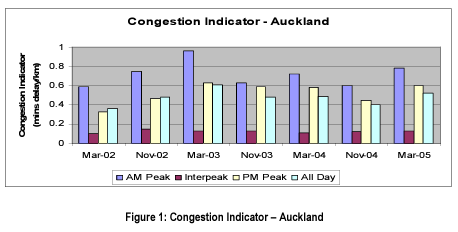Planning for certainty through sustainable transportation
Where presented / published:
2005 Transit New Zealand Symposium, Christchurch
Abstract
Government transportation spending is at record levels – $22 billion is now programmed under the National Land Transport Programme over the next 10 years. The current annual expenditure level is at $1.7 billion, up nearly 80% in the last four years. The lion’s share of this is for roading. A major driver of new road construction is congestion levels and travel time variability, particularly in Auckland and Wellington.
How bad is congestion in New Zealand’s cities? How are congestion levels changing? How variable are our travel times? Do we know whether these indicators vary by mode? Transit New Zealand has been monitoring motor vehicle congestion levels and travel time variability twice yearly in Auckland and Wellington (since 2002), Tauranga (since 2003) and Christchurch (since 2004).
People desire certainty in planning their trips. They do not want to spend 15 minutes on one day for the trip to work and 25 minutes the next. Do we have the data we need to plan for certainty in transportation journey times?
The theme of this conference is “planning for certainty”. Another aspect of our current fossil-fuel based transportation system is fuel price stability and continuity of supply. It will be hard to plan for certainty in such an uncertain global energy context, with New Zealand even less able to control its destiny than most other countries of the developed world. To plan our transportation system for certainty of fuel price and supply would suggest a much smaller reliance on fossil fuels.
This paper looks at available data to understand congestion trends, travel time variability and fuel price and supply and looks at ways to provide certainty for transportation. The paper argues that more emphasis should be put on travel demand management and support for walking, cycling and public transport. In turn, these measures (and sustainable transportation in general) have the potential to make car travel times more predictable, thus enhancing the opportunities for “planning for certainty”. The paper also makes recommendations for developing a comprehensive suite of travel indicators that better represents a more sustainable transport system.
This paper is available online on this website.





